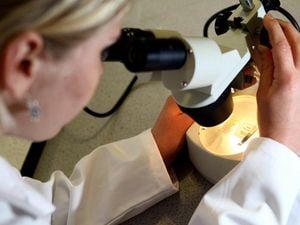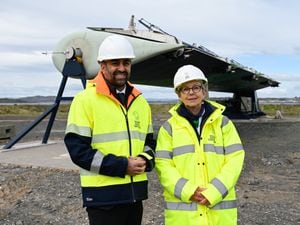Gene treatment hope for rare childhood kidney cancer
Pre-cancerous cells found in healthy tissue could lead the way towards new treatment options without the need to remove kidneys.

A gene linked to a rare form of childhood kidney cancer could hold the key to treating the disease without the need to remove the vital organs, scientists say.
Most youngsters suffering from Wilms’ tumour have their kidney removed, but new research suggests that in future treatments could target patches of abnormal tissue without having to sacrifice one or both kidneys.
While kidney cancers in children are rare, Wilms’ tumour is the most common type, affecting around 80 children a year in the UK.
Nine out of 10 cases are treated with surgery to remove the affected kidney.
Although the cancer usually affects only one kidney, in around 10% of cases both kidneys are affected.
Dr Kathy Pritchard-Jones, a professor of paediatric oncology at the UCL Great Ormond Street Institute of Child Health, said: “Surgery for Wilms’ tumour usually involves removing the whole kidney to ensure no tumour is left behind.
“However, some children need more precise surgery that preserves their kidney function, especially when they have tumours in both kidneys or are at increased genetic risk of further tumours.
“My hope is that in future we’ll be able to develop treatments that focus on these patches of abnormal tissue without having to sacrifice one or both kidneys.”
The research team, which included scientists from the Wellcome Sanger Institute, Addenbrooke’s Hospital in Cambridge and London’s Great Ormond Street Hospital, analysed genetic material from 229 kidney tissue samples.
The researchers were able to trace the growth of the pre-cancerous tissue to a single rogue cell with a DNA change that suppressed the gene H19.
The function of H19, according to the researchers, is to ensure that cells grow in an orderly manner.
When this gene is turned off, it becomes invisible to other cells, making way for abnormal tissue to develop and take hold.
Tim Coorens, first author of the study from the Wellcome Sanger Institute, said: “A good analogy for what we found is that Wilms’ tumour is not just an isolated weed on an otherwise well maintained field.
“We discovered that the weed has an extensive root underneath the soil.
“Now we know we need to look for the patch of soil where the root has taken hold.
“If we remove that patch, the weed isn’t going to return.”
The findings were published in the journal Science.





